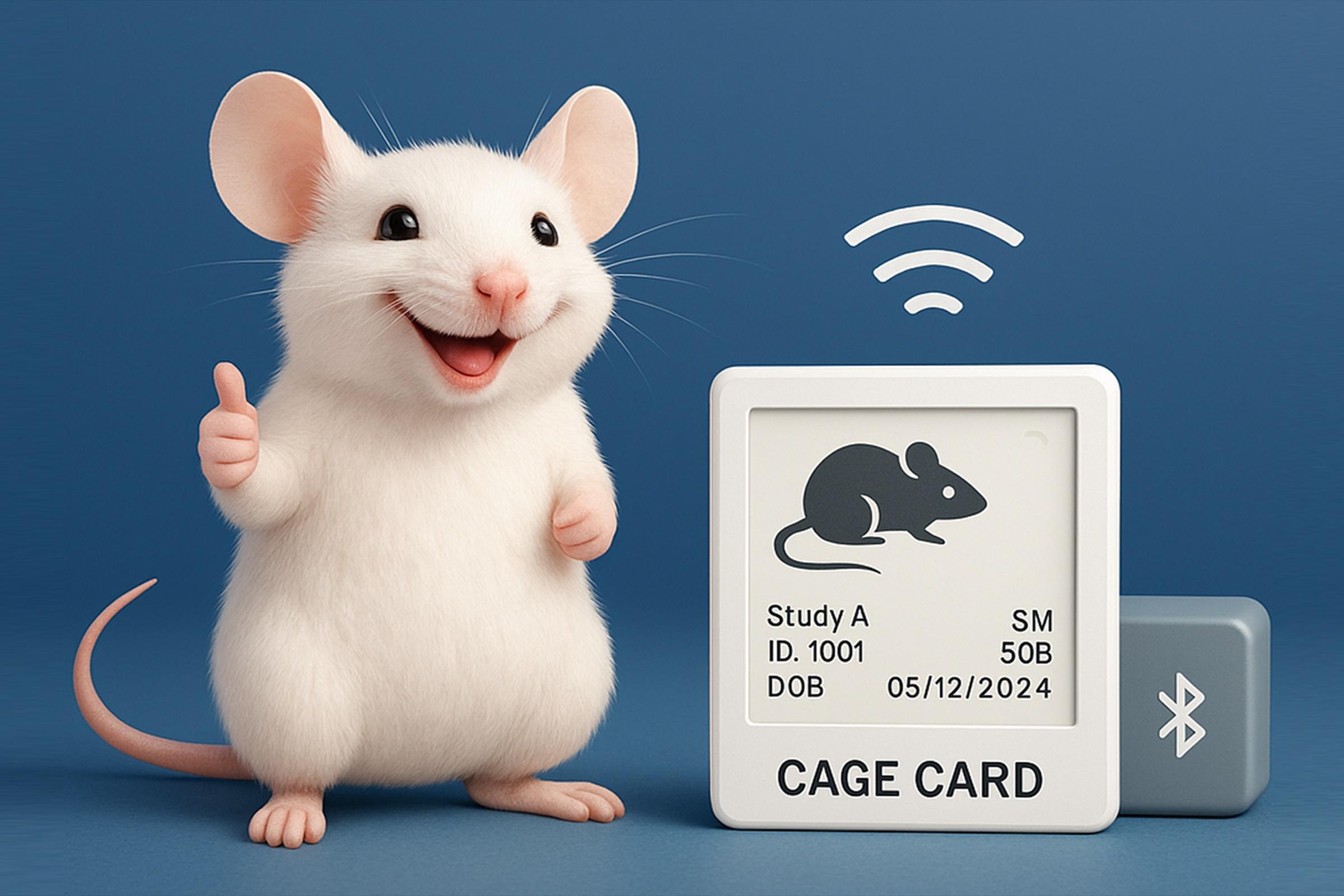Why BLE is a Safe Choice for Digital Cage Cards in Animal Research Facilities
Prioritizing Animal Welfare and Safety
When selecting wireless technology for digital cage cards, the well-being of animals and the safety of staff are key considerations. The PicoTeam digital cage card system is built on Bluetooth Low Energy (BLE) technology, which is widely recognized for its safety in environments involving both animals and humans. In our system, base stations communicate wirelessly with cage cards, enabling secure two-way data exchange and real-time updates. BLE’s low-power operation means that it works without introducing unnecessary stress or environmental disturbance to animals in research settings.
Non-Ionizing Radiation and Biological Safety
BLE operates in the 2.4 GHz frequency band, the same range as Wi-Fi, mobile tablets, laptops, and many other everyday electronics and medical devices. Unlike ionizing radiation, such as X-rays, BLE uses non-ionizing signals that do not alter biological molecules or cells. Decades of research and reviews by organizations like the World Health Organization, the European Commission, and national health authorities have shown that BLE exposure at the levels used in digital cage card systems is not harmful to animals or people.
Regulatory Perspectives on BLE Safety
Leading international agencies—including the International Commission on Non-Ionizing Radiation Protection (ICNIRP) and the US Federal Communications Commission (FCC)—consider BLE technology safe for use around both animals and people. These guidelines are based on extensive research and set exposure limits far below any level associated with health risks. PicoTeam’s digital cage card system operates well within these safety limits, making it suitable for animal facilities.
Practical Safety Advantages of BLE
- Low Transmission Power: BLE’s energy-efficient communication reduces any risk of biological effects.
- No Impact on Animal Welfare: BLE signals do not disturb animal behavior, daily activity patterns, or biological rhythms, supporting the highest standards of animal care.
- Safe for Staff and Visitors: Continuous, everyday exposure to BLE is considered safe for anyone working in or visiting animal facilities.
- Minimal Environmental Interference: BLE does not produce electromagnetic noise that could interfere with sensitive medical or research equipment.
- Secure Data Transmission: BLE technology supports secure, encrypted data transfer, protecting both animal identities and sensitive research information.
Conclusion: Supporting Welfare with Safe Technology
BLE technology supports animal welfare by providing a safe, non-intrusive, and scientifically validated solution for digital cage cards. With low-power, non-ionizing signals and endorsement from major health and regulatory authorities, BLE helps ensure that animal research facilities remain safe and comfortable for both animals and staff.


